New on Creative Sources
by Jason Bivins
January 2006
Ernesto Rodrigues’ fine—and very productive—Creative Sources imprint has rocketed into the forefront of improv imprints specializing in various strains of electroacoustic and “lowercase” musics (the labels are oft-debated, so insert asterisks as you please). The latest batch of releases isn’t as consistent as one might hope for, but there are still many rewarding discs, some exceptional moments, and a much-appreciated opportunity to hear new musicians at work. 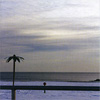 Absence (CS 034) features a trio consisting of trumpeters Axel Dörner and Leonel Kaplan joined by percussionist Diego Chamy. Recorded on a visit to Buenos Aires in March 2003, this isn’t the strongest thing I’ve heard from Dörner. But the trumpeters get into some excellently crackling, gurgling spaces that recall this label’s fine Abu Tarek. For example, long flatulence begins “n’thas” before that piece empties out appealingly into a chorus of whispers; and harsh, speaker-shredding noise is mimicked on “asn’th”. This stuff will clearly delight fans of post-Bill Dixon trumpet playing. Chamy, new to me, is a gifted colorist and creates a number of effects which sound electronic (he’s clearly been studying Burkhard Beins). Low eddies, swirls, and whooshes predominate (particularly on the opening “thasn’”), occasionally peaking during moments that suggest growling animals waiting to strike, almost as if angered by the listener. The best piece is saved for last, as the music swings between long silences or rests and hideously buckling metal noises. The disc meanders just a bit, but certainly has some fine moments. Absence (CS 034) features a trio consisting of trumpeters Axel Dörner and Leonel Kaplan joined by percussionist Diego Chamy. Recorded on a visit to Buenos Aires in March 2003, this isn’t the strongest thing I’ve heard from Dörner. But the trumpeters get into some excellently crackling, gurgling spaces that recall this label’s fine Abu Tarek. For example, long flatulence begins “n’thas” before that piece empties out appealingly into a chorus of whispers; and harsh, speaker-shredding noise is mimicked on “asn’th”. This stuff will clearly delight fans of post-Bill Dixon trumpet playing. Chamy, new to me, is a gifted colorist and creates a number of effects which sound electronic (he’s clearly been studying Burkhard Beins). Low eddies, swirls, and whooshes predominate (particularly on the opening “thasn’”), occasionally peaking during moments that suggest growling animals waiting to strike, almost as if angered by the listener. The best piece is saved for last, as the music swings between long silences or rests and hideously buckling metal noises. The disc meanders just a bit, but certainly has some fine moments.
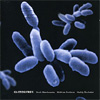 Glotosifres (CS 048) is a brief recording (three improvisations in under 30 minutes) played by pianist Nush Werchowska, alto saxophonist Heddy Boubaker, and drummer Mathias Pontevia. I was unfamiliar with all these musicians, but found my first encounter with their music pretty enjoyable. It is relatively high energy, dense music for this label. Werchowska’s prepared piano is a focus for much of the time, as on “Bribes” the extensions and manipulations of the instrument get quite intense. Boubaker’s palette seems narrower, residing mainly in conventional-sounding overblowing techniques (though some pleasant flutter-tonguing occasionally surfaces). Pontevia knows how to stir the pot and, while he’s not usually at the center of the music’s movement, his use of dynamics often directs things and pushes the other two players in more heated directions. When Werchowska plays conventionally, the feel is not unlike an early Cecil Taylor improvisation (that is, if Cecil were accompanied by a post-Lovens percussionist and a post-Jack Wright altoist). But on the fine “Spires”, the players transform themselves unexpectedly—it’s almost like hearing flame die out—and go reductionist for the duration. Glotosifres (CS 048) is a brief recording (three improvisations in under 30 minutes) played by pianist Nush Werchowska, alto saxophonist Heddy Boubaker, and drummer Mathias Pontevia. I was unfamiliar with all these musicians, but found my first encounter with their music pretty enjoyable. It is relatively high energy, dense music for this label. Werchowska’s prepared piano is a focus for much of the time, as on “Bribes” the extensions and manipulations of the instrument get quite intense. Boubaker’s palette seems narrower, residing mainly in conventional-sounding overblowing techniques (though some pleasant flutter-tonguing occasionally surfaces). Pontevia knows how to stir the pot and, while he’s not usually at the center of the music’s movement, his use of dynamics often directs things and pushes the other two players in more heated directions. When Werchowska plays conventionally, the feel is not unlike an early Cecil Taylor improvisation (that is, if Cecil were accompanied by a post-Lovens percussionist and a post-Jack Wright altoist). But on the fine “Spires”, the players transform themselves unexpectedly—it’s almost like hearing flame die out—and go reductionist for the duration.
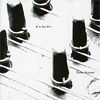 Tisha Mukarji plays “square piano frame” on D is for Din (CS 046). Upon reading this I thought immediately of Andrea Neumann’s innenklavier, the disgorged guts of the piano. I’m not precisely sure which components are preserved in Mukarji’s work but the sound is fairly provocative. You can hear some insectoid notes that sound like distant Cecil Taylor crossed with Nancarrow. But there are also delicious electric-sounding crackles, clacking percussive noises, groaning bowed sounds, and so forth. She’s got a sense for dynamics, which is a happy thing (given the tendency of so many improvisers to fill up all available space), and she paces her improvisations quite well (especially so on the long title track). Sonic images come frequently: hissing buzzes from the hive float into the sky or things scuttle beneath the floorboards. The only problem is that Mukarji uses the same approaches and techniques a bit too frequently, and—aside from the droning “Brush Piece (jagged)”—there is an awful lot of metal being rubbed together. Still, a provocative disc by an interesting musician. Tisha Mukarji plays “square piano frame” on D is for Din (CS 046). Upon reading this I thought immediately of Andrea Neumann’s innenklavier, the disgorged guts of the piano. I’m not precisely sure which components are preserved in Mukarji’s work but the sound is fairly provocative. You can hear some insectoid notes that sound like distant Cecil Taylor crossed with Nancarrow. But there are also delicious electric-sounding crackles, clacking percussive noises, groaning bowed sounds, and so forth. She’s got a sense for dynamics, which is a happy thing (given the tendency of so many improvisers to fill up all available space), and she paces her improvisations quite well (especially so on the long title track). Sonic images come frequently: hissing buzzes from the hive float into the sky or things scuttle beneath the floorboards. The only problem is that Mukarji uses the same approaches and techniques a bit too frequently, and—aside from the droning “Brush Piece (jagged)”—there is an awful lot of metal being rubbed together. Still, a provocative disc by an interesting musician.
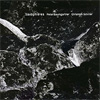 Savagnières (CS 045) features the interesting instrumentation of Peter Baumgartner on powerbook and Christoph Schiller on spinet! Named for the Swiss live venue at which these five improvisations were recorded, this recording is a mostly successful study in contrast. Baumgartner is an interesting figure with his powerbook. Needless to say, he favors drone-based material; but there’s a warmth to his work that actually renders much of his contributions fairly organic sounding (indeed, I was frequently reminded of a hurdy-gurdy). By contrast, Schiller’s spinet work isn’t so much kin to Mukarji’s metallic abstractions as it is to a rougher, more industrial take on Denman Maroney’s hyper-piano. Particularly when the electronics oscillate most vigorously, Schiller attacks and is especially aggressive with the strings (sometimes yielding tonality, elsewhere sheer noise). And every so often, he even conjures up Derek Bailey! The long second improvisation (nearly 20 minutes) is the most languidly paced, but between Schiller’s use of an e-bow and Baumgartner’s metallic swirls, there’s a continual tension that elevates the music. Savagnières (CS 045) features the interesting instrumentation of Peter Baumgartner on powerbook and Christoph Schiller on spinet! Named for the Swiss live venue at which these five improvisations were recorded, this recording is a mostly successful study in contrast. Baumgartner is an interesting figure with his powerbook. Needless to say, he favors drone-based material; but there’s a warmth to his work that actually renders much of his contributions fairly organic sounding (indeed, I was frequently reminded of a hurdy-gurdy). By contrast, Schiller’s spinet work isn’t so much kin to Mukarji’s metallic abstractions as it is to a rougher, more industrial take on Denman Maroney’s hyper-piano. Particularly when the electronics oscillate most vigorously, Schiller attacks and is especially aggressive with the strings (sometimes yielding tonality, elsewhere sheer noise). And every so often, he even conjures up Derek Bailey! The long second improvisation (nearly 20 minutes) is the most languidly paced, but between Schiller’s use of an e-bow and Baumgartner’s metallic swirls, there’s a continual tension that elevates the music.
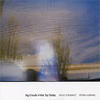 Big Clouds in the Sky Today (CS 047) comes courtesy of a pair of Oregonians, Doug Theriault (sensor guitar controlling and live electronics) and well-regarded saxophonist Bryan Eubanks (here manipulating open circuit electronics). As these two play such lush, spacious music and do so in very long form (two improvisations fill out this hour-long disc), I’m half tempted to compare them—in sensibility if not actual sound—to Portland “rock” band Growing. Long drones brim with microscopic details and occasionally flash with something like anger, restlessness, or instability. At times there are warm analog sounds which recall organ or even farfisa, but for the most part this is dense, thoroughly electronic stuff. These guys probably had folks like poire_z and Voice Crack in mind when creating this music, but I was actually reminded most of the (not entirely successful) meeting between Pan Sonic and Merzbow. The pair sound most comfortable when the music is at its most noisy and aggressive, as the quieter passages are almost nervously filled with chatter and information. Indeed, though this is a pleasant enough recording, the music lacks a sense of gelassenheit (though at times the bustle of the 40 minute “A Majestic” gets close). Big Clouds in the Sky Today (CS 047) comes courtesy of a pair of Oregonians, Doug Theriault (sensor guitar controlling and live electronics) and well-regarded saxophonist Bryan Eubanks (here manipulating open circuit electronics). As these two play such lush, spacious music and do so in very long form (two improvisations fill out this hour-long disc), I’m half tempted to compare them—in sensibility if not actual sound—to Portland “rock” band Growing. Long drones brim with microscopic details and occasionally flash with something like anger, restlessness, or instability. At times there are warm analog sounds which recall organ or even farfisa, but for the most part this is dense, thoroughly electronic stuff. These guys probably had folks like poire_z and Voice Crack in mind when creating this music, but I was actually reminded most of the (not entirely successful) meeting between Pan Sonic and Merzbow. The pair sound most comfortable when the music is at its most noisy and aggressive, as the quieter passages are almost nervously filled with chatter and information. Indeed, though this is a pleasant enough recording, the music lacks a sense of gelassenheit (though at times the bustle of the 40 minute “A Majestic” gets close).
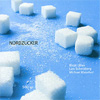 It’s good to see that, over the last several years, trumpeter Birgit Ulher has become a more active player since her voice is increasingly commanding. She works a generally familiar field—nestled at the intersection of post-Bill Dixon splatterphonics and reductionist strategies—but what’s interesting about Ulher’s playing is not only her own expressions but the situations she seeks out. On 500gr (CS 052), she is part of the trio Nordzucker (where she’s joined by saxophonist Lars Scherzberg and cellist Michael Maierhof). The paired horns explore alternating staccato blasts and laminal cool-downs in ways similar to those generated by Ulher’s work with Martin Küchen. What I find interesting is the way they react—over the course of these nine improvisations—to Maierhof’s radically unpredictable cello maneuvers. At times, he plays with the arco grace of Tristan Honsinger, but elsewhere mangles the instrument, making it submit like Fred Lonberg-Holm. Only on one track—the plangent “50gr”—does the trio get sparse and meditative. Certainly there are plenty of birds-chirping moments, but I prefer the organic industrialisms heard elsewhere. A fine disc. It’s good to see that, over the last several years, trumpeter Birgit Ulher has become a more active player since her voice is increasingly commanding. She works a generally familiar field—nestled at the intersection of post-Bill Dixon splatterphonics and reductionist strategies—but what’s interesting about Ulher’s playing is not only her own expressions but the situations she seeks out. On 500gr (CS 052), she is part of the trio Nordzucker (where she’s joined by saxophonist Lars Scherzberg and cellist Michael Maierhof). The paired horns explore alternating staccato blasts and laminal cool-downs in ways similar to those generated by Ulher’s work with Martin Küchen. What I find interesting is the way they react—over the course of these nine improvisations—to Maierhof’s radically unpredictable cello maneuvers. At times, he plays with the arco grace of Tristan Honsinger, but elsewhere mangles the instrument, making it submit like Fred Lonberg-Holm. Only on one track—the plangent “50gr”—does the trio get sparse and meditative. Certainly there are plenty of birds-chirping moments, but I prefer the organic industrialisms heard elsewhere. A fine disc.
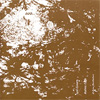 Duo . . . (CS 044) is a fascinating, cryptic set of recordings from Cyril Epanat (acoustic guitar and objects), Mathias Forge (trombone and objects) and Jérôme Bertholon (recording, electric lighter, quartz clock). Recorded from over the course of 30-some hours—from just before midnight on a Friday until Sunday dawn—these very quiet pieces are mostly rather abstract and seem to reflect the “environmental” properties of the recording locations (all in Southern France, and credited simply as “grove”, “leafy forest”, “big field pondside”, and “’Chatelus’ stone”). Forge is certainly the more garrulous of the players, exploring the flatulent tailgating end of the sound spectrum but doing so—if this is possible—in a highly restrained fashion (which surely requires an impressive amount of control). Epanat will only rarely slash across the strings or pluck a single resounding note—he’s more likely, much more than Forge, to avoid the idiomatic properties of his instrument. Occasionally I thought I heard some insects buzzing in the environs and even more seldom there are passages of rising intensity. But most tracks are anything but effusive, with the players intent to merge with whatever sounds they find around them. Excellent stuff. Duo . . . (CS 044) is a fascinating, cryptic set of recordings from Cyril Epanat (acoustic guitar and objects), Mathias Forge (trombone and objects) and Jérôme Bertholon (recording, electric lighter, quartz clock). Recorded from over the course of 30-some hours—from just before midnight on a Friday until Sunday dawn—these very quiet pieces are mostly rather abstract and seem to reflect the “environmental” properties of the recording locations (all in Southern France, and credited simply as “grove”, “leafy forest”, “big field pondside”, and “’Chatelus’ stone”). Forge is certainly the more garrulous of the players, exploring the flatulent tailgating end of the sound spectrum but doing so—if this is possible—in a highly restrained fashion (which surely requires an impressive amount of control). Epanat will only rarely slash across the strings or pluck a single resounding note—he’s more likely, much more than Forge, to avoid the idiomatic properties of his instrument. Occasionally I thought I heard some insects buzzing in the environs and even more seldom there are passages of rising intensity. But most tracks are anything but effusive, with the players intent to merge with whatever sounds they find around them. Excellent stuff.
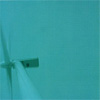 Aérea (CS 050) is the second disc by the duo I Treni Inerti (Ruth Barberán on trumpet and Alfredo Costa Monteiro on accordion). Many readers will be familiar with these players, both staples of the Iberian improv scene and both of whom have participated in some of Creative Sources’ finest releases. What’s instantly surprising is that, on the first of these three improvisations, the two play so conventionally. That’s only compared to some of their extremely harsh work heard elsewhere, but I admire the way in which these two continually investigate new contexts and strategies. The first piece builds in blocks, proceeds in cells or stages almost like a Scelsi piece (but filtered through, say, Mauricio Kagel’s instrumental sensibility). Monteiro in particular sounds focused on creating very dense slabs of tonality, which Barberán supplements with ethereal drones, muted cries, or wonderfully hideous metallic scrapes. And as the music progresses, it becomes clear that the players are experimenting with attack and decay rather than abstracted techniques or non-idiomatic playing. This isn’t to say that they eschew some of the styles they’re better known for; the remaining pieces, for example, often find them on more familiar ground: conjuring up a symphony of squeaks and hissing, a concerto of growls and murmurs (although they memorably relent on the second untitled piece, with a lovely passage when a shimmering repeated figure from Monteiro conjures up high strings, as Barberán stirs it up in the guttural regions). A very fine recording. Aérea (CS 050) is the second disc by the duo I Treni Inerti (Ruth Barberán on trumpet and Alfredo Costa Monteiro on accordion). Many readers will be familiar with these players, both staples of the Iberian improv scene and both of whom have participated in some of Creative Sources’ finest releases. What’s instantly surprising is that, on the first of these three improvisations, the two play so conventionally. That’s only compared to some of their extremely harsh work heard elsewhere, but I admire the way in which these two continually investigate new contexts and strategies. The first piece builds in blocks, proceeds in cells or stages almost like a Scelsi piece (but filtered through, say, Mauricio Kagel’s instrumental sensibility). Monteiro in particular sounds focused on creating very dense slabs of tonality, which Barberán supplements with ethereal drones, muted cries, or wonderfully hideous metallic scrapes. And as the music progresses, it becomes clear that the players are experimenting with attack and decay rather than abstracted techniques or non-idiomatic playing. This isn’t to say that they eschew some of the styles they’re better known for; the remaining pieces, for example, often find them on more familiar ground: conjuring up a symphony of squeaks and hissing, a concerto of growls and murmurs (although they memorably relent on the second untitled piece, with a lovely passage when a shimmering repeated figure from Monteiro conjures up high strings, as Barberán stirs it up in the guttural regions). A very fine recording.
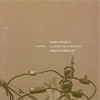 Monteiro is back on board for Diafon (CS 041), a marvelous trio with Ernesto Rodrigues (violin, pick-ups and objects) and Barry Weisblat (electronics). A single 35-minute track, recorded in Lisbon in July 2004, this is music of single-minded purpose, variety, and great invention. Cycling between skull-wrecking density (with insane jabbing from pickups and electronics) and eerie calm, this is pretty captivating stuff. The range of contrasts is often striking, with some of the best moments occurring when Monteiro’s closed miked crackle merges with Weisblat’s subterranean noise as Rodrigues’ bow and bridge manipulation stand out in relief. Another good one. Monteiro is back on board for Diafon (CS 041), a marvelous trio with Ernesto Rodrigues (violin, pick-ups and objects) and Barry Weisblat (electronics). A single 35-minute track, recorded in Lisbon in July 2004, this is music of single-minded purpose, variety, and great invention. Cycling between skull-wrecking density (with insane jabbing from pickups and electronics) and eerie calm, this is pretty captivating stuff. The range of contrasts is often striking, with some of the best moments occurring when Monteiro’s closed miked crackle merges with Weisblat’s subterranean noise as Rodrigues’ bow and bridge manipulation stand out in relief. Another good one.
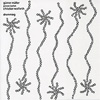 To me, the pick of the litter is the wondrous Drumming (CS 049). Günter Müller (ipod and electronics), Jason Kahn (laptop), and Christian Wolfarth (percussion) are all renowned percussionists but, as you can see, only Wolfarth actually works with that instrumentation. And what’s immediately compelling about these nine improvisations (all entitled “Drumming”) is how they resist and evade conventional percussive strategies. They move, they pulse, they pace and accent; but they aren’t bound by any repeating figures or meters. The integration of electronics and conventional percussion is quite seamless, revealing a sonic mix not unlike that heard on Plus Minus recordings (though the music is quite different, altogether more burbling and active). Occasionally, as on “Drumming 2”, Wolfarth plays with a hypnotic insistence; but it does more to accentuate the liquid work of his colleagues than anything else. Many of the pieces are quite cavernous sounding, and Müller in particular is an effective and creative player in this kind of context. Yet even when the trio isn’t constructing densely layered pieces (as on the squeaking “Drumming 5”), their sense of contrast and dynamics is excellent. My only quibble is that many of the pieces are abruptly cut off, suggesting some kind of radical editing. But this disc deserves to be heard nonetheless. To me, the pick of the litter is the wondrous Drumming (CS 049). Günter Müller (ipod and electronics), Jason Kahn (laptop), and Christian Wolfarth (percussion) are all renowned percussionists but, as you can see, only Wolfarth actually works with that instrumentation. And what’s immediately compelling about these nine improvisations (all entitled “Drumming”) is how they resist and evade conventional percussive strategies. They move, they pulse, they pace and accent; but they aren’t bound by any repeating figures or meters. The integration of electronics and conventional percussion is quite seamless, revealing a sonic mix not unlike that heard on Plus Minus recordings (though the music is quite different, altogether more burbling and active). Occasionally, as on “Drumming 2”, Wolfarth plays with a hypnotic insistence; but it does more to accentuate the liquid work of his colleagues than anything else. Many of the pieces are quite cavernous sounding, and Müller in particular is an effective and creative player in this kind of context. Yet even when the trio isn’t constructing densely layered pieces (as on the squeaking “Drumming 5”), their sense of contrast and dynamics is excellent. My only quibble is that many of the pieces are abruptly cut off, suggesting some kind of radical editing. But this disc deserves to be heard nonetheless.
|

